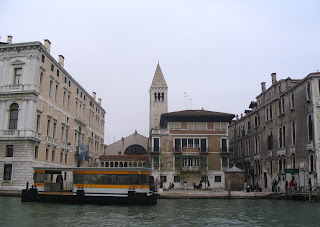Venetian performer who gave birth to a legendary womaniser
 |
| Giacomo Casanova, whose mother was the actress Zanetta Farussi |
At the age of 17, Zanetta had married the actor Gaetano
Casanova, who was 10 years older than her.
He had just returned to Venice after several years with a
touring theatrical troupe, to take a job at the Teatro San Samuele.
Farussi’s parents opposed the marriage because they
considered acting to be a disreputable profession.
But Farussi soon began working at Teatro San Samuele herself
and the following year she gave birth to a son, Giacomo, who was to grow up to
make the name Casanova synonymous with womanising and philandering. Giacomo Casanova would later claim that his real father was Michele Grimani, who owned the Teatro San Samuele.
Zanetta and Gaetano accepted a theatrical engagement in London where
Farussi gave birth to their second son, Francesco, who became a well-known
painter.
They returned to Venice in 1728 and went on to have four
more children. The youngest child was born two months after the death of his
father.
 |
| The Teatro San Samuele, where Farussi found work |
In 1737 Farussi signed a long contract to appear in Italian
comedies in Saxony.
The following year she made her debut in Pilnitz, near
Dresden, on the occasion of the proxy
wedding of Crown Princess Maria Amalia.
Farussi eventually visited Warsaw, where she presented two
short theatrical pieces she had written herself.
When the Seven Years War started, the Saxon court suspended
the activities of the Italian comedy troupe and the actors all retired and were
granted an annual pension.
 |
| The playwright Carlo Goldoni |
Meanwhile, her eldest son, Giacomo Casanova, had graduated
in law from the University of Padua. At various times during his life he worked
as a clergyman, military officer, violinist, businessman and spy. Throughout
his life it was a recurring pattern that he embarked on passionate affairs with
women, ran out of money and was imprisoned for debt.
He was locked up for a time in the Doge’s Palace in Venice
in terrible conditions, but he eventually escaped through the ceiling of his
cell, broke back into the building through a window, walked out through the
main entrance and made his escape in a gondola across the lagoon on his way to
exile in France.
Farussi, who was known in theatrical circles as La Buranella,
a reference to her family roots on the island of Burano, died in 1776 in
Dresden.
Travel tip:
 |
| The church of San Samuele, just beyond the waterbus stop |
The playwright, Carlo Goldoni, who wrote more than 250
comedies, was born in the beautiful Gothic Palazzo Centani in Venice. The
palace, in Calle dei Nomboli in the San Polo district, is now a centre for
theatrical studies and has a collection of theatrical memorabilia on display.
It is open to the public every day except Wednesday.



